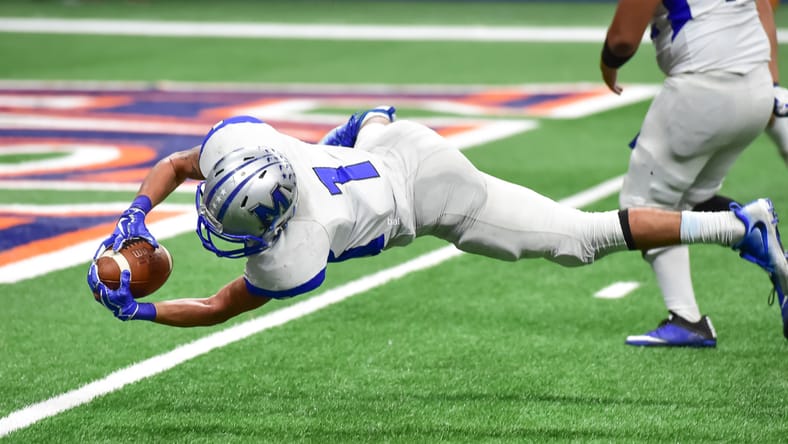Sports Visualization: Localization of Players Using Multiple Static Cameras

The sports industry is steadily growing worldwide, with research data showing even more promising projections for the future. One of the contributing factors to this unprecedented growth is the improved and increasingly sophisticated broadcasting techniques.
Over the course of the past few decades, improvements and new developments in sports broadcast have completely reshaped the industry.
Advancements like high-resolution cameras covering multiple angles with close-up and slow-mo capabilities, dynamic shots, and advanced graphics, along with other cutting-edge visualization elements, have all contributed to enhanced viewer experience, higher engagement, and appreciation of the game.
Although many open challenges and room for improvement still remain, modern sports broadcasting techniques are fascinating in many ways.
Techniques discussed here vary from sport to sport; we mostly focused on ones applicable to baseball and football. It would take several books to cover them all, so let’s take it one at a time. For now, let’s explore different techniques employed in player localization using multiple static cameras.
Overlapping Cameras
When covering a live sports event, it is essential to eliminate all blind spots are ensure all-encompassing, even superfluous amount of camera angles to ensure viewers don’t miss a key moment in the game.
Inferring precise player locations amid visual clutter and cluttered background is a significant technological issue for sports visualization systems. Provided the data from these multiple camera shots can be properly fused, using several cameras with overlapping angles is one approach to solving this issue.
On a side note: many sports events take place at inconvenient times, where they might interfere with your other daily responsibilities. Any die-hard sports fan will testify they would prioritize an important game over the birth of their child.
With Topessaywriting services, you no longer have to make this or that choice and have it both ways; they are a multi-specialty writing service providing high-quality writing on any subject in a short turnaround time.
Goalpost and Pylon Mounted POV Cameras
One of the more recent editions in football broadcasts is small POV cameras mounted on goalposts and pylons. These cameras often provide crucial and previously unimaginable (due to early camera size) angles useful for fans and refereed alike.
These cameras proved vital when, in 2017, the running back overcame two defenders and extended past a third to deposit the ball in the end zone just before his knee struck the ground in overtime to win the final game of the season.
The officials had the viewpoint they required to make the game-changing, vital touchdown decision thanks to these cameras, which were there to record every moment and detail of that crucial event.
Like quality sports, broadcast requires precision, attention to detail, and localization so does the quality translation. But with thousands of online translation services claiming they’re the best, with more popping up by day, it’s tough to isolate a truly high-quality translation service.
Say hello to Pickwriters — a review service that tests and ranks these services based on user feedback and expert opinion and classifies them according to different criteria like price, user ratings, and speed. When you can’t independently verify the quality of work you receive, it is best to be absolutely sure of your choice to begin with.
Shadow and Background Removal
Although there are several appearance-based techniques for removing backgrounds and shadows, they often function best for very gentle shadows and steady backgrounds. However, shadows are usually stronger during sporting events and backgrounds — chaotic, busy, and dynamic. For effective shadow removal, experts consequently rely on geometric limitations and multi-camera arrangement.
Simply depending on these geometric limitations might lead to losing picture areas that correspond to occluded sections of players when a player is obscured by a shadow. To prevent this, specialists need a reliable way of differentiating between an actual shadow and a darkened spot on a player or a ball.
To achieve this, they categorize original and projected pixels as shadow or non-shadow before applying restrictions to them. The logical assumption is that shadow pixels would seem more similar across different viewpoints than non-shadow pixels.
Final Thoughts
Even the most dedicated fans cannot attend every game of their favorite team. When they are not there in person, they are looking for the best possible on-screen experience to watch their beloved team play live. A poorly shot game can ruin even the most exciting of games.
Footage that is too far off from the action, focuses on the wrong section of the stadium, fails to follow the ball, or misses the critical moment can turn a would-be once-in-a-lifetime experience into mass irritation and disappointment. It’s difficult to win back millions of upset fans who will no longer tune in to your future streams.
On the flip side, a well-executed broadcast can enhance the enjoyment of a match and provide, in some ways, an even better experience than being there live.
More About:Uncategorized
